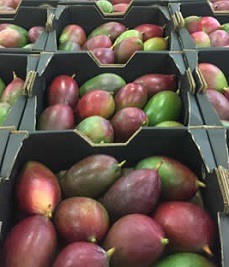 In the absence of Peruvian mangoes, South African mangoes arrived in Europe and Dubai with no competitors.
In the absence of Peruvian mangoes, South African mangoes arrived in Europe and Dubai with no competitors.
If it weren't for shipping delays and heatwaves in October and November last year, it would've been a perfect opportunity for South African mangoes this year.
In the event, remarks an exporter who declines to be named because the mango season hasn't been finalised yet, they still managed to earn more than if the fruit were sold on the domestic market.
"We kicked off with quite a bit of Tommy Atkins to Europe at the start of the season, then some Kents in the middle and ending with a good volume of Keitts. Along with the grape industry we faced some really tough challenges in Cape Town harbour with wind delays which are detrimental to a sensitive product like mangoes," he says.
"We packed all of our mangoes for retail programmes but when fruit arrived too soft or with internal browning, as was the case in some instances, it was rejected by retail but we could still move it to wholesale where some of it sold at the same price levels as we would have received from retail, but the comebacks on quality unfortunately brought down overall price levels."
He observes that it has been an extremely challenging season for mango exports.
The mango industry primarily plants cultivars with an eye on shelf life, which means that the production of niche cultivars like Heidi has dwindled.
Ice cream makers in Mozambique are reportedly looking for specifically Heidi mangoes in South Africa, but many mango farmers have over the years removed it in favour of higher-yielding cultivars with longer shelf life.
